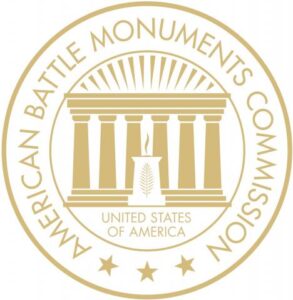In this lesson, students first analyze a sample infographic and then build their own. The process includes developing an essential question about World War I and then answering it using maps and statistics from the Blue Book. Finally, students will use Piktochart to create an infographic explaining their answer to the question.
Guiding Questions
- How can students synthesize information from the written narrative, maps, and statistics of the ABMC Blue Book to build an argument about the United States’ contribution to the outcome of World War I?
Learning Outcomes
The student will be able to:
- Synthesize information from the written narrative, maps, and statistics of the ABMC Blue Book to build an argument about the United States’ contribution to World War I.
- Create an infographic using the web application Piktochart
Pre-activities
Project this example of an infographic made using resources available in the Blue Book and elsewhere. Have students explore it with you and note how it poses and answers a question and incorporates statistics, visuals, and facts to support the answer. Also, note that graphics such as these often have more utility on the web than when printed. In this one, for example, pointing your mouse over certain graphics gives you additional information. Have students identify the question that it poses and the various pieces of evidence that are used to support it. Critique the infographic: What other
information might be helpful? What does it do well?
Activities
- Students should choose or develop an essential question about World War I. Some questions that might be good places to start, based on the resources available in the ABMC book, are:
- How much did America contribute to the war in terms of military strength?
- How quickly was America able to join the fight?
- How did the Meuse-Argonne offensive impact the outcome of the war?
- How much did America contribute to the war in terms of economic strength?
- Note that each of these questions connects to the main questions of this chapter—students should be well prepared to answer them if you have also used the other activities from the chapter.
- Students need to choose appropriate statistics from the Blue Book to incorporate into their infographic. They should aim for a combination of three graphs or statistics to share that will help readers answer the main question. Use the Infographic planning sheet to make sure students have what they need before they begin to work online.
- Students should develop a thesis, or answer, to their main question, based on the evidence they have found.
- Students should log in to Piktochart and create an account. They can choose a theme they feel is appropriate for their question and label their infographic with the question they would like to answer.
- If unfamiliar with the web application, students should watch the tutorial on how to create a Piktochart. This is a very thorough tutorial created by Secondary Solutions that explains how to use Piktochart in the classroom and how to make your own.
- Students should complete building their infographic, incorporating their question, statistics, and thesis. s and maps could also be used to support their point.
- Have students share their infographics with each other via a course website, or use printed version to make a bulletin board.
Assessment
Assess students using the rubric and their planning sheet.
Modifications
Note that creating an infographic aimed at answering one of these essential questions practices similar skills required to create and/ or decode the document-based-questions used on the AP United States History exams. Students must work closely with a variety of primary sources, determine context, and synthesize information into a cohesive and accurate argument. Rather than working online to create an infographic, teachers could ask their students to develop a DBQ that asks (and answers) one of the essential questions.
You might prepare students to create their own infographics by investigating some of the
following: The Great War 100 project has many examples of infographics related to the war. However, they do not tell a story or answer a question. Encourage students to think about what kinds of statistics they might want to combine to convey more information about the war. You might also have them critique some of the infographics. What are they lacking? What more information could they use?
Visualizations shows visualization fails—areas where poor choices have led to confusing or misleading visuals. It would be interesting to show students some of these and have students pick out what is wrong with them!
Alternate pre-activity: This is an example of an infographic focused on the timeline of the breakout and resolution of World War I. Discuss with students: what does this graphic emphasize as the major cause of the war? Could they have designed it differently to show that something else (increased militarism, the influence of imperialism) had a greater effect? There are also some statistical errors in this graphic in the “Deaths” section. Can they guess what they are?
Materials Needed
Computers with internet access for each student
Planning Sheet and Project Rubric
Smartboard or projector and whiteboard combination
There are many charts of statistics throughout the Blue Book, most of them consolidated in Chapter XIV, “Interesting Facts and General Information.” In addition, at the end of each chapter, the authors share statistics about a particular offensive’s casualties, mileage gained, etc.
 An official website of the United States government. Here's how you know.
An official website of the United States government. Here's how you know. 